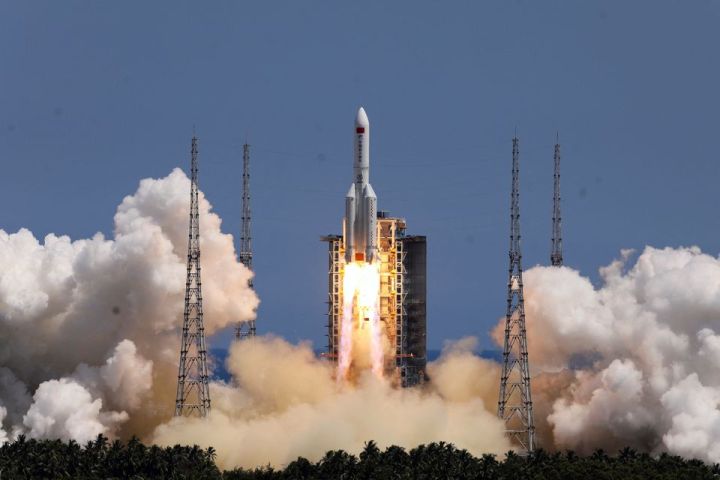China has launched another module to its space station in progress, Tiangong. On Sunday, July 24 at 2:22 p.m. local time, a Long March 5B rocket lifted off from the Wenchang Space Launch Center in Hainan, Reuters reports.
The rocket was carrying the Wentian laboratory module, which is the second of three modules and which will join the Tianhe module which launched last year. These two will be joined by the Mengtian module, set to be launched in October this year.

The Wenchang module will be received and installation begun by the three-person Shenzhou-14 crew who have been on the space station’s first module since June. The Tianhe module they are staying in houses the astronaut living quarters, while the Wenchang module contains research equipment, and the Mengtian module will also be a laboratory space.
The launch today was “a complete success” according to China’s state broadcaster CCTV. The module is 18 meters long and weighs 23 tonnes, and is scheduled to dock with the Tiangong station around 13 hours after launch. As well as being used for science, the module also contains backups for the Tianhe module including navigation, propulsion, and orientation controls. The module additionally has a robotic arm for moving payloads around outside the station.
The station is part of China’s long-term plan for space research, and as reported by space.com, it intends to have the Tiangong station continually staffed by Chinese astronauts for at least 10 years, with foreign astronauts and even possibly space tourists able to visit as well. With just one module to the station before now, crews have had to depart before another crew can arrive. But with the addition of Wentian which can host extra sleeping quarters, crews will now be able to perform handovers as new crews arrive.
The first of these crew handovers will likely occur in December this year when the Shenzhou-15 crew arrives before the Shenzhou-14 crew departs.



